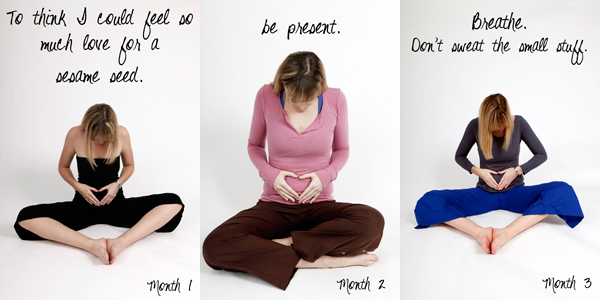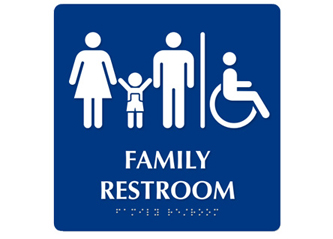Blog a la Cart
February 15, 2011
February 15, 2011
Master of Space
I have a a piece of paper hanging on a wall in my house vouching for the fact that I am a Master of Space (loose interpretation). Public space versus private space. Space versus place. Public space versus the public sphere. Yadda yadda yadda abstract, academic nonsense yadda yadda.
It’s not that I’m knocking this education. Hell, I spent $80,000 to get it and will be paying it back 8 gazillion fold for the rest of time. Unless Sallie Mae accepts the offer of our first born child. We do, after all, have a filler baby coming along this summer. This blog is proof enough of Sunny’s cuteness and value, so James and I may very well be in the clear, financially speaking. Morally? Well… anyway.
The issue I have with all this intellectual lingo and theory swirling through my head is that it is often so distanced from real life. It’s trapped in books by men whose names I can still barely pronounce, and privileged to those who A. are aware of such educational opportunities and B. can afford or are crazy enough to spend that kind of money on a degree. And it all feels very trapped in academia and useless for everyday life.
Given my interest in place and space, I’m hyper-aware of my surroundings and the social, physical, cultural, and environmental influences on those encounters. Like so many things in my life, my experience and perspective with space shifted the moment I became a parent.
I have never been more aware of the hostility of space until I was a mother, as public space is a cruel and unwelcoming beast to those with children.
And so I want to talk about it. I want to talk about space in a way that isn’t stuck in an Ivory Tower, but to which many many parents, especially mothers, can relate.
I remember when I was pregnant, my mother told me to enjoy all the kindness that would be lavished upon me by strangers. She warned, “As soon as that baby is on the outside, the world won’t be so nice.”
I had no idea what she really meant at the time. But it became crystal clear once Sunny was no longer safely (i.e. quietly) tucked inside my belly.
Despite all having once been children, people are generally unwelcoming of small, squirming, noise-making, bodily-fluid expelling infants. They look at you with this expectation that you will stay home, away from public consumption, until that annoying baby stage is over. It’s not surprising that women, the child bearers, have been relegated to the private sphere throughout history due to this kind of attitude. The nasty looks, the doors left unopened when struggling with a baby carriage, the shaking heads of disapproval, the airplane passengers sighing in frustration as though you, the parent, are getting some kind of sick pleasure out of hearing your child scream, the requests to breastfeed elsewhere (i.e. in private, isolated, away from where others might see you) are all small, yet-not-so-subtle, signs of the public as a social body’s hostility toward parenting and maternity.
And then there’s the hostility of physical space. Upon navigating the world with a child, whether in an infant carrier or on my hip or pushed in a baby stroller, I quickly recognized the extreme challenges posed on handicapped individuals when confronted with stairs, and doors, and entryways that are designed with little thought as to how those individuals have to negotiate physical space. In fact, not only can I identify with the some of the struggles of the physically handicapped (I certainly don’t want to imply that I can ever understand fully), society lumps the handicapped and parents together, as demonstrated by many a family bathroom SLASH handicapped bathroom sign. Given how many people navigate this world with children, shouldn’t we be thinking about overhauling physical public space entirely to be more welcoming to parents AND the disabled, rather than offering us one tiny bathroom stall, wiping our hands, and calling it a day?
I’ve learned to budget extra time for every errand and trip out of the house to account for all the time I must spend searching for ramps or elevators to avoid stairs, waiting for doors to be held open, or fighting with doorways while juggling a baby, groceries, and my purse/diaper bag in a precarious and ridiculous dance to just get from the inside out or visa versa, or to seek out a bathroom or appropriate changing surface for emergency diaper situations. It’s exhausting just to pick up a jug of milk from the store when you have a child in tow. And the social space of those encounters, as I mentioned, add to the general hostility and exhaustion of the entire experience.
James, in particular, has faced challenges with physical space as a parent. Often men’s bathrooms are not equipped with changing tables. Because apparently we still live in a world that assumes that mommy is always responsible for any kind of diaper duty. Why would a man need a changing table?! MEN DON’T CHANGE DIAPERS!
When put in this situation, James then is confronted with the awful choice of whether to leave our child sitting in her own feces until he finds an accommodating restroom, or to change her on the floor of a public bathroom. Such healthy options, no? Or, when I’m available, he passes the poop my way, and we reinforce the standard that women do the diapers, and men, well, don’t.
In one particularly frustrating situation, James had to hike across the campus of our local Y to use a tiny, handicapped bathroom to change our child after swim class because none of the locker rooms adjoining the pool allowed for a father/daughter duo. There was an Adult Women’s locker room for women aged 18+, a Men’s locker room for all ages, but only male, and a Women’s Family locker room, because again, the assumption is that women are on baby duty, not men. James was told that he could change Addison in a small, handicapped bathroom located a 2 minute walk from the pool, so Sunny shivered and cried while James hauled her sopping wet body across the campus. Needless to say, we no longer do swim classes at the Y. And yes, I lodged a complaint about this situation to the management. We’ll see if a Men’s Family locker room appears anytime soon.
As a mother, my greatest frustration with physical public space has been related to breastfeeding. On a cultural, social, and physical level, we are failing. Miserably.
Socially and culturally, it is still not acceptable to breastfeed your child in public (I am referring generally to America, not Europe and other countries where it is a more widely practiced and accepted behavior). While I know many women that push back on this, it takes a great deal of confidence and an ability to brush off the shaming to do so. I, who I like to think of as a fairly confident mother and breastfeeder, often found myself perched atop a public toilet, breast out, automatic toilet flushing beneath my ass, Sunny starfishing and startling all over my lap as we struggled to get her through a meal. When seated outside in public space, say a park, or the beach, I often found myself covering up with a scarf or blanket. Why I’d prefer my child to sweat and suffocate under a blanket while trying to fill her belly than face the disapproving glances of strangers is beyond me, but it happens.
Why do I feel uncomfortable breastfeeding my child while seated at a table in a restaurant? Why do I feel I must hide away in a dirty public bathroom rather than feed my child where everyone else is eating? It doesn’t make sense, and comes from societal expectations and cultural norms that pressure women to behave in a certain way when breastfeeding (i.e. get the hell out of the public eye).
And sadly, physical space certainly doesn’t accommodate these social demands. Restrooms often lack seating for women to utilize when breastfeeding. Universities, corporate offices, gyms, etc. often lack private rooms for lactating women, resulting in women running off to their car, or a bathroom stall, neither of which is ideal. If society is going to pressure women to hide from public view when breastfeeding (which I think is problematic in and of itself), why doesn’t the physical space at least allow for this? Also, I understand that many women are quite private and, even if the cultural norms were shifted, would be uncomfortable breastfeeding publicly. We should be sensitive to this as well.
Never underestimate the kindness of a chair and an electrical outlet placed within a bathroom or locker room or women’s lounge. For a breastfeeding mother, it can provide such relief and comfort. Which again, I think is sad that such small gestures can be seen as such HUGE acts of thoughtfulness, but what’s even sadder is how few places even offer that courtesy.
I attended the University of Southern California for graduate school. I was breastfeeding during my final year, and needed to pump multiple times on one particularly heavy day of classes. Given that USC has over 30,000 students and 14,000 faculty and staff, one would think that on such an expansive campus there would be multiple lactation rooms, or at least private rooms for women adjoined to the restrooms. Sadly, there was one lactation station located in the University’s gym, a seven minute BIKE ride from my classes. I am forever grateful to my male professor that allowed me to pump in his office mid-seminar for an entire semester. He has no idea the difference that offer made. I’m disappointed in myself that I waited for him to ask me where I pumped, and if I wanted the use of his office after 2 or 3 weeks of observing that I scurried off mid-class with a breast pump in tow, rather than having the guts to ask at the beginning of the semester.
I’ve promised myself that I will be stronger, more vocal, and less fearful or shamed this time around.

